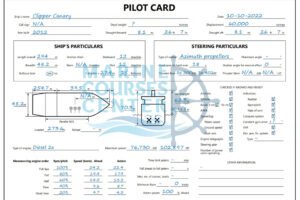sling | lifting equipment | types of slings | types of slings for lifting | types of chain slings | chain slings | slings used on ships | marine courses center
sling | slings on ship
various types of cargoes require various types of slings
Cargo slinging utilizes rope, wire and chain, used either singly or made up into relevant patterns.
Although specialized cargoes such as containers, bulks, timber and steel, etc., require unique discharging methods.
Basics of safe slinging
1) The load must be adequately secured by the sling.
2) The sling must be adequately attached to the lifting appliance.
3) The load must be slung so that it will not collapse or change form when it is lifted.
4) The load must not damage the sling, perhaps causing it to part.
5) The load must not be damaged by the sling e.g., wire rope
slings may rip paper, score timber, distort steel, etc.; fibre rope slings can rupture paper sacks.
6) All lifting parts should act as near to the vertical as possible.
7) Use spreaders where appropriate to even out the load on each part of the sling.
8) Attach a lanyard to heavy, long or awkward loads to assist in controlling its movement.
9) If a single cargo hook is being used, this should be positioned vertically above the centre of gravity of the load. This can be achieved using legs of different length if the CG (centre of gravity) is off-centre.
10) Whenever a shackle is used, any moving part such as the sling must pass through the bow, the pin must only be secured to fixed parts.
TYPE OF SLING
TYPE OF SLING(S) | CARGOES TO LIFT |
Automatic grabs. | Bulk cargoes |
Board Sling | Fragile cargo such as bags of cement |
Boxes | Explosives |
Canvas slings. | Bagged cargo |
Can hooks. | Barrels & Drums |
Chain slings. | Packaged timber, timber logs, beans/girders ex hatch beams. |
Car Slings | Motor cars and Lorries |
Container Spreader | Containers |
Electro magnets | Iron and steel products, scrap iron. |
Fibre straps. | Bales of pulp |
Looped rope slings. | Cases, two slings end looped together on the hook. |
Metal cradles. | Loose, round timber. |
Metal frames. | Paper rolls, where not lifted by hydraulic suction methods. |
Metal stirrups | Pallets |
Net slings, wire or rope | Inhomogeneous packages of various ‘small’ sizes. Pallets with homogeneous loads |
Nylon straps. | Paper rolls, where not lifted by hydraulic suction methods. |
Plate Clamps. | Steel plates |
Rope slings. | Wide applications, including general loads of cases, crates, bagged cargo, packaged unit loads, pallets, packaged timber. |
Spiked clamps | Heavy cases |
Trays | Small cases and packages, cartons, strapped units |
Tongs | Log timber |
Wire slings (Snotter). | Heavy crates/cases, beams/girders, pallets, etc. |
Wire spreaders (Heavy Lift). | Locomotives and similar cargo |
In this chapter will cover the following slings:-
Rope sling:
This is formed by joining the ends of a piece of 25-30 mm rope about 10-12 metres in length with a short splice.
The sling is in very common use. Bags, baled goods, barrels and cases may all be slung with this.
Canvas sling:
This is formed by sewing a piece of canvas between the parts of a rope sling.
It is used for bagged grain, rice, coffee and similar cargoes where the contents of the bag are small.
Any spillage is retained in the canvas and is not wasted.
The stress on the outside bags is spread more evenly and thus the chance of splitting is reduced.
Board sling:
Is similar to the canvas sling but wood is used in place of the canvas.
This is used for slinging fragile cargo such as bags of cement.
Snotter:
May be made of either rope or wire by forming an eye at each end of a If. 20mm wire or 50~60 mm rope 4~6 metres in length.
It is used for slinging cases, bales, wet hides and timber.
Chain sling:
Plate clamps:
Can hooks:
The hook slips under the lip of the drum or barrel.
There are frequently four or five sets of hooks on a ring, which enable drums and barrels to be handled very rapidly.
They are not to be recommended for handling heavy barrels as there is a possibility that the staves will be pulled out.
Trays:
May be square, rectangular or round. They are slung by short pieces of rope, called legs, attached to the corners. Used for small cases and drums.
Boxes:
Nets:
Car slings:
Heavy Lift Slings:











